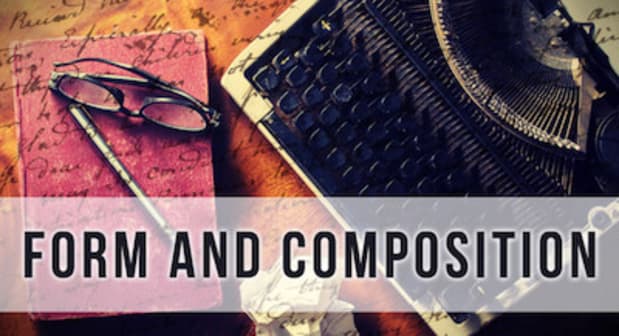When New York Times contributor Kristin Wong started freelancing, her first client offered her zero dollars for a screenwriting gig and she accepted it. She had to pay her dues, right?
Then a friend who was already a successful freelance writer told her she had to stop accepting low writing rates. Not only for herself, but because she was lowering the bar for writers everywhere.
This caused a shift in Kristin’s mind, and she began to view her writing as a business instead of a hobby. Now she’s a full-time writer, journalist and author — and living proof that you can make money as a freelance writer.
To help others who want to make money from freelancing, Kristin and fellow full-time writer Alex Webb created Come Write With Us, a course that teaches how to break into the writing business.
When I first started freelance writing, it seemed like such a mysterious and exclusive world. I wish I had a roadmap like Come Write With Us to help me navigate the world of professional writing!
If you want to make money from your writing but don’t know where to start, this course is for you. In this post, I’ll explain what I found most valuable about the course and what to expect when you enroll.
A chance to learn from seasoned freelancers
Both Kristin and Alex are the real deal with the bylines to prove it.
Since transforming from writing hobbyist to working professional, Kristin has written for the New York Times, Glamour magazine and Travel + Leisure. In 2018, she published her first book, “Get Money”, with Hachette Book Group.
Alex works full time as a freelance writer, and he has authored and contributed to books published by National Geographic, the Financial Times Press and Skyhorse.
It takes real work to get published by big publications — but there’s a difference between working harder and working smarter. Come Write With Us teaches you how to work smarter.
Here’s an example. When Alex first started writing articles, he was satisfied to get paid $50 per piece… until he did the math and realized he couldn’t make ends meet that way. Working harder would mean writing more articles for $50, and there are only so many hours in the day. Instead, he focused on working smarter, finding clients who will pay higher rates — $300, $500 and even $650 or more — for an article.
In this course, he teaches how to take that smart approach.
What’s included in the Come Write With Us Course
Come Write With Us is an online course about the media industry and how to make a freelance writing business work in the real world.
Over nine self-paced modules, you’ll learn how to take your writing from amateur to professional, create a personal brand for your writing, and set rates or negotiate better ones.
The course also includes worksheets, tips and tricks, advice from writers and a Facebook group filled with other students you can share your experience with.
Text-based modules that teach you how to become a freelance writer
While the course includes a few videos, most of the lessons are written material. Here’s a preview of what you’ll learn:
- Schedule time to practice: Improve your writing by practicing. This module teaches you how to make time in your schedule for this discipline.
- Brainstorm epic ideas: Learn strategies for coming up with fresh topics to write about.
- Write like a pro: Take your freelance writing to the next level by learning what editors expect from writers.
- Build your portfolio: If you want bylines, you need a platform and personal brand. This module walks you through how to set up an online writing portfolio.
- Pitch like a pro: Want to see the pitches Kristin and Alex used to pitch the New York Times and National Geographic? They share pitches that worked for them.
- Find work: When you’re just starting out, finding and landing great gigs can be tough. Learn where to find work, with tips for looking beyond the obvious places.
- Set your rates: Learn how to set your prices and how to negotiate higher rates.
- Network with other writers: Practice reaching out to established writers and influencers in the industry in a way that feels good.
- Protect yourself and your business: To help you understand the legal side of your writing business, this module covers taxes, media liability insurance and more.
These modules are packed with content and contain behind-the-scenes examples, writer Q&As, homework assignments and exercises. You’ll need a writer’s notebook and time set aside for completing the assignments.
If you follow through on all the advice in this course, you’ll have a polished, professional writing clip by the end of the third module and an online writing portfolio by the end of module four.
Bonus material in this writing course
Come Write With Us also includes two bonuses:
- Access to the private Facebook community, where Kristin and Alex post job listings and answer questions.
- The Writer’s Toolkit for Getting Sh*t Done guide, which includes all the resources, tools and strategies they use in their own freelance writing businesses.
Come Write With Us is available on demand and is self-paced, so you can take the course when it works best for you. Most people get through the course in four to six weeks.
Connect to the Internet to read through the modules, or download homework assignments to print and work on later. Other downloads are available as well, including worksheets, schedules and checklists.
The course is hosted on Teachable, a teaching platform for online courses or coaching businesses.
Pros and cons of Come Write With Us
One of the biggest things that stuck out to me about this course is how it’s friendly and inviting. Kristin and Alex really want to help writers make money and they understand all the big emotions we wrestle with.
If you feel like a complete imposter, they get it. If you’re totally insecure, that’s OK. And if you lack confidence or skills, no problem. They’re here for it, and ready to guide you through the process of figuring out how to be a professional writer.
This is a text-heavy course — really wordy. However, the writing is comprehensive and not at all pretentious. If you’re interested in the topic of starting a freelance writing business, it will hold your attention.
Come Write With Us covers everything from choosing a niche and launching a website to setting rates and pitching. It holds your hand through the entire process and focuses heavily on the emotional hurdles new freelancers are facing. If dealing with your feelings isn’t your thing, this approach could be a turnoff.
While the modules contain a ton of actionable information and advice, one of the biggest values of the course is the supportive community, as well as access to the instructors.
This course is aimed at people who are completely new to freelancing, people who want to write but lack know-how or people who already work in freelance writing and want to take their business to the next level. Although it teaches the skills needed to run a full-time freelance business, the training can be adapted to suit a part-time writing business or side hustle as well.
While there’s some industry jargon to watch out for, this is a great overview for beginners without being overwhelming. Overall, the lessons are detailed, outlined well and a solid way to get a complete newbie up and running.
The course costs either a one-time payment of $197 or three monthly payments of $72 for lifetime access.
The truth is, you don’t need to take a freelance writing course to have a successful career or earn hundreds of dollars per article. But taking a high-quality course might help you get there faster.
Come Write With Us doesn’t offer any shortcuts (there aren’t any), but it will help you avoid the pitfalls that make the journey longer or more frustrating than it has to be. With solid advice and business acumen, Kristin and Alex will teach you how to avoid getting scammed, find high-paying gigs and pitch articles editors love. And that will put you in the fast lane on the road to becoming a freelance writer.
This post contains affiliate links. That means if you purchase through our links, you’re supporting The Write Life — and we thank you for that!
Photo via shurkin_son / Shutterstock
The post Want Bylines in Big-Name Publications? These Freelancers Will Teach You appeared first on The Write Life.



